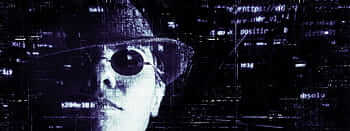Self-supervised learning has emerged as a powerful technique in the field of machine learning. It is a type of learning that allows machines to learn from unlabeled data without any human intervention. Self-supervised learning models are trained on large datasets, and they learn to recognize patterns and structures in the data without the need for explicit labels. In this article, we will discuss the top 10 self-supervised learning models that will dominate the machine learning landscape in 2023. Let’s get started.
Contrastive Predictive Coding (CPC)
Contrastive Predictive Coding (CPC) is a self-supervised learning model that is used for representation learning. It works by training a neural network to predict the future representation of a given input sequence. CPC has shown impressive results in several domains, including speech recognition, natural language processing, and computer vision.
SimCLR
SimCLR (Simple Framework for Contrastive Learning of Representations) is a self-supervised learning model that is used for representation learning. It is based on the idea of contrastive learning, where the model is trained to discriminate between pairs of similar and dissimilar images. SimCLR has achieved state-of-the-art results on several computer vision tasks, including object recognition and image retrieval.
BYOL
BYOL (Bootstrap Your Own Latent) is a self-supervised learning model that is used for representation learning. It works by training a neural network to predict the representations of an augmented version of an input image. BYOL has achieved state-of-the-art results on several computer vision tasks, including object recognition and semantic segmentation.
SwAV
SwAV (Swapping Assignments between views) is a self-supervised learning model that is used for representation learning. It works by training a neural network to identify similar patches in a pair of images. SwAV has achieved state-of-the-art results on several computer vision tasks, including object recognition, image retrieval, and semantic segmentation.
DINO
DINO (Emerging Properties in Self-Supervised Vision Transformers) is a self-supervised learning model that is used for representation learning. It is based on the idea of training a neural network to align the representations of different views of the same object. DINO has achieved state-of-the-art results on several computer vision tasks, including object recognition, image retrieval, and semantic segmentation.
MoCo
MoCo (Momentum Contrast) is a self-supervised learning model that is used for representation learning. It works by training a neural network to contrast the features of two images, one from a query set and the other from a memory bank. MoCo has achieved state-of-the-art results on several computer vision tasks, including object recognition and image retrieval.
Barlow Twins
Barlow Twins is a self-supervised learning model that is used for representation learning. It works by training a neural network to minimize the redundancy between the representations of two different views of the same image. Barlow Twins has achieved state-of-the-art results on several computer vision tasks, including object recognition and image retrieval.
Bootstrap Your Own Dual Learning (BYDL)
Bootstrap Your Own Dual Learning (BYDL) is a self-supervised learning model that is used for representation learning. It works by training two neural networks to learn from each other without any labeled data. BYDL has achieved state-of-the-art results on several natural language processing tasks, including text classification and sentiment analysis.
CLIP (Contrastive Language-Image Pre-Training)
CLIP is a self-supervised learning model that learns representations of images and text. It stands for “Contrastive Language-Image Pre-Training”. CLIP is trained on a large corpus of text and images, and it learns to associate textual descriptions with corresponding images. CLIP can be used for various tasks, such as image classification and image retrieval.
ALBERT (A Lite BERT)
ALBERT is a self-supervised learning model that is used for natural language processing tasks. It stands for “A Lite BERT”. ALBERT is a smaller and more efficient version of BERT, another popular language model. ALBERT achieves state-of-the-art results on various NLP benchmarks, while requiring fewer computational resources.









